 Why You Can Trust CNET
Why You Can Trust CNET
Years of Experience
Hands-on Product Reviewers
Sq. Feet of Lab Space
If you’re a T-Mobile user after a new phone, you have loads of options. You can get top phones like the iPhone 15 Pro and Galaxy S23 Ultra along with exciting foldables like Samsung’s Galaxy Z Flip 5 or the Motorola Razr Plus. While the phones included in this list vary when it comes to size, price and features, there are a few things they share in common. The best phones of 2023 have fast processors and vibrant screens to make your Netflix shows look great. The best phones also have high-quality rear cameras that allow you to take gorgeous images you’ll return to look back on for years to come. Budget-friendly phones like the Pixel 7A also offer smooth all-around performance at a more cost-conscious price.
No matter what you want or use the phone for, there’s a device for you. To simplify the decision, we’ve rounded up our top picks. Each phone on this list meets the requirements for what CNET considers to be a best T-Mobile smartphone. Every phone on this list has been thoroughly reviewed and tested, and you’ll find options across iPhone and Android that fit different needs and different budgets. Below we’ve picked the best T-Mobile phones you can get this year.
What is the best T-Mobile phone for most people?
The best phone for iPhone fans is the $799 iPhone 15. It has one of Apple’s most recent processors, the A16 Bionic chip found in last year’s iPhone 14 Pro, meaning it should support new software features for years to come. The iPhone 15 has the best balance of camera performance and features (like the Dynamic Island) that will feel new to those coming from older iPhones to satisfy most people.
For more info, read our guide to help find the best phone for your needs and take a look at our tips on how to buy a new Apple iPhone or Android phone and where to snag the best phone deals.
With the Dynamic Island, a USB-C port for more convenient charging and an upgraded camera with a higher resolution and a crisper zoom, the iPhone 15 is a significant upgrade for those with older iPhones. It feels like a scaled back version of the iPhone 14 Pro, making Apple’s entry-level iPhone 15 feel like a bigger leap forward than last year’s.
The iPhone 15 is available in two size options: the 6.1-inch iPhone 15 and the 6.7-inch iPhone 15 Plus. They run on the same chip as iPhone 14 Pro, the A16 Bionic, which should bring notable performance upgrades to those with an iPhone that’s several years old. These phones also have Apple’s second-generation ultra wideband chip, enabling a new feature that makes it easier to find friends or family members in a crowd.
Last year’s iPhone 14 Pro may be a better choice if you can still find it through third-party retailers at a discount, particularly because it has a dedicated telephoto lens. But the iPhone 15 is the most exciting upgrade Apple’s standard iPhone has seen in years. Read our iPhone 15 and 15 Plus review.
Pros:
- USB-C port for more convenient charging.
- Colorful matte design.
- Improved camera that can automatically take people and pet portraits.
- Dynamic Island brings better multitasking.
Cons:
- No always-on display.
- Find My Friends feature only works with other iPhone 15 phones.
- Discounted iPhone 14 Pro may be a better value.
- Galaxy S23 offers a longer optical zoom.
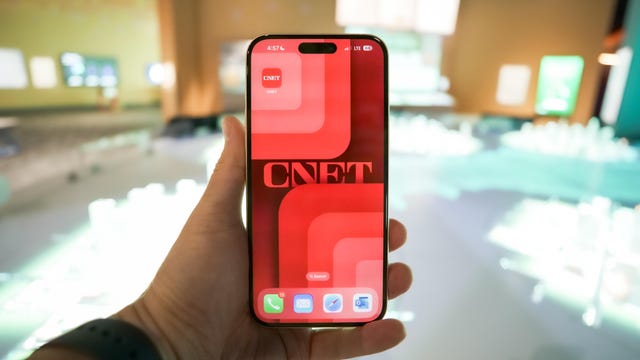
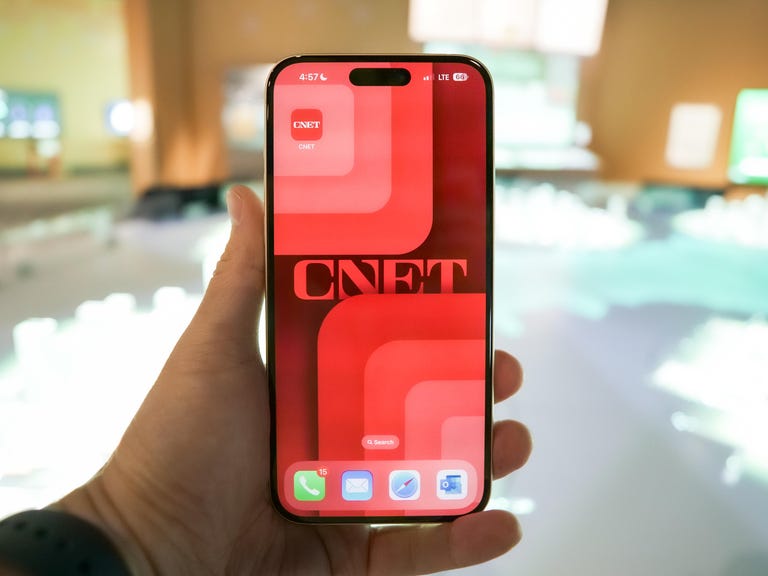
The iPhone 15
Best premium iPhone
iPhone 15 Pro
Apple gave its Pro models a glow-up with a refreshed lighter build, a new shortcut button and the world’s smallest processor. And it did all this while managing to keep that tried-and-true iPhone aesthetic front and center. They also made more of a differentiation between the Pro and Pro Max model. The 15 Pro also still has the same familiar 3x telephoto camera found on previous models, while the Pro Max takes that further to 5x.
The brain behind the iPhone 15 Pro and Pro Max is the A17 Pro chip, which has the performance chops to handle console tier video games like Resident Evil Village. If the A17 Pro chip is the brains, then iOS 17 is the 15 Pro and Pro Max’s soul. The new OS is filled with lots of quality of life improvements throughout like StandBy mode, Check-In, Stickers in Messages and better autocorrect for the keyboard.
The iPhone 15 Pro and 15 Pro Max are some of the best phones released by Apple or any phone maker this year. Read our Apple iPhone 15 Pro and 15 Pro Max review.
Pros:
- Lighter and more comfortable to hold
- A17 Pro for console video games
- Being able to change the focus in Portrait photos is welcome
- Easier and cheaper to repair back glass
Cons:
- Action button can only trigger one action
- Baseline 15 Pro Max is $100 more
- The only color option is blue
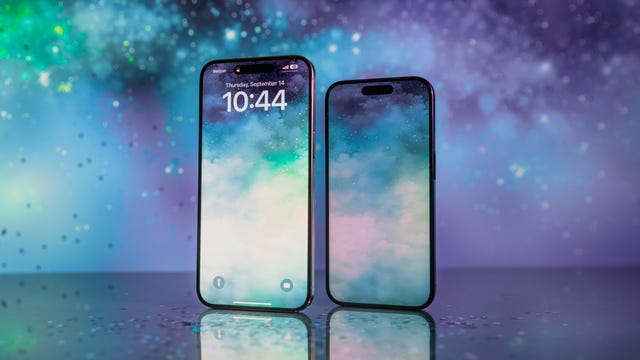
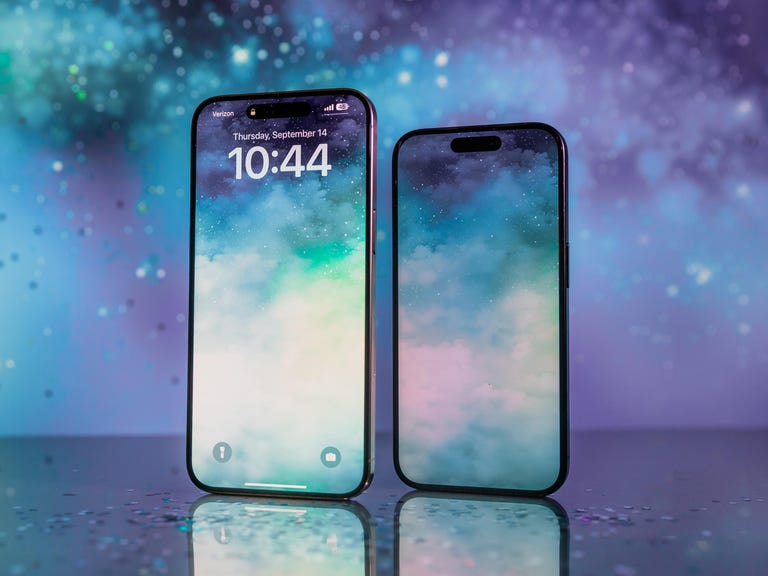
Best premium Android phone
Samsung Galaxy S23 Ultra
The Galaxy S23 is a lot, but in a good way. It’s more than most people need in a phone, but that doesn’t make it any less impressive. Samsung made improvements to the camera’s resolution (200 megapixels compared to 108 megapixels), color tones and dynamic range, while retaining the same edgy design and massive 6.8-inch screen as its predecessor. There’s also a new Qualcomm Snapdragon 8 Gen 2 processor that’s been optimized specifically for Samsung’s phones, which brings faster performance compared to the Galaxy S22 Ultra.
Starting at $1,200, it may be an understatement to call this phone expensive. But those willing to pay more for a giant screen and a high-quality, versatile camera won’t be disappointed. Read our full review of the Galaxy S23 Ultra.
Pros:
- Fast performance
- Excellent main camera, especially in low light
- Bright screen
- Included stylus
- Double the storage in the base model
- Four years of Android OS updates
Cons:
- High price
- Photos don’t always look natural, especially selfies
- No improvements to fast charging
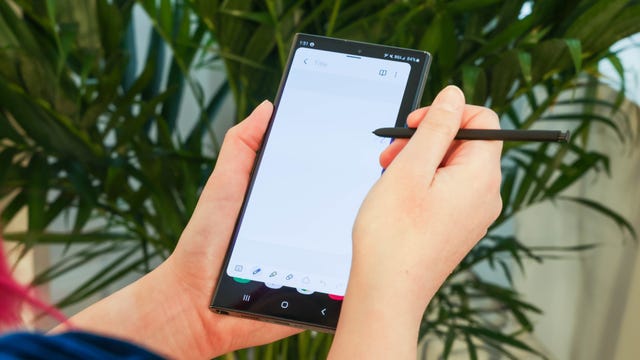
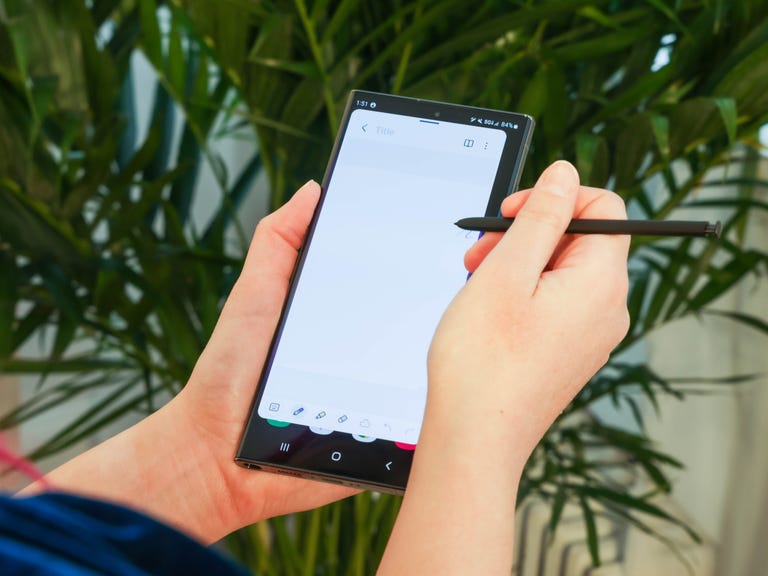
Best everyday phone
Apple iPhone 13
While the iPhone 15 Pro has all the exciting tech packed in, it also has a huge price attached. The standard iPhone 13 is a reliable choice for most people, sporting a 6.1-inch screen and two excellent rear cameras.
Its performance and camera quality aren’t as good as you’d get from the top end iPhone 15, but the iPhone 13 will still receive the latest iOS updates, and its lower price makes it a great option for those of you not wanting to splash all your cash on the latest tech.
Pros:
- Good cameras
- Solid battery life
- Cinematic mode is fun
- Affordable price compared to other iPhones
Cons:
- Notch is noticeable
- Cinematic mode is more of a novelty than a pro feature
- Selfie camera could be better
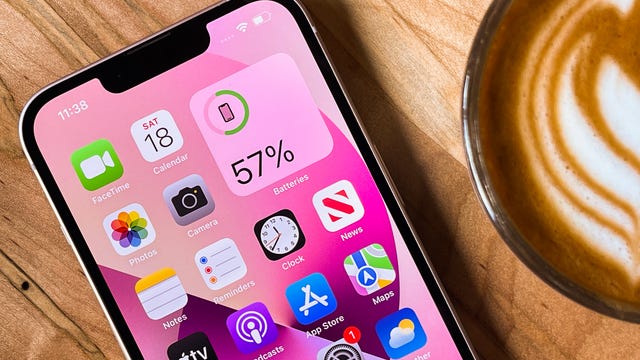
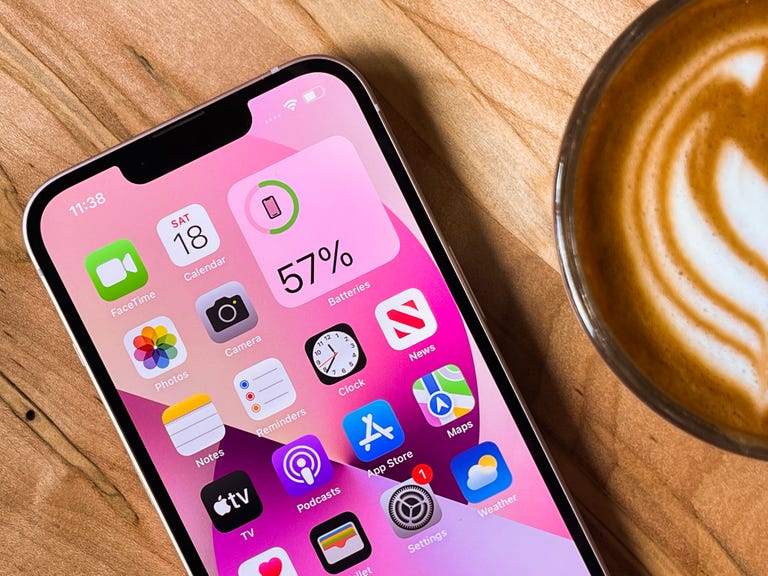
Best Android phone for $500
Google Pixel 7A
Google’s budget phone took a leap forward in 2023 with the Pixel 7A, which offers many of the same benefits as the Pixel 7 but at a cheaper price. Like the Pixel 7, the Pixel 7A runs on Google’s Tensor G2 processor, meaning it has many of the same photo editing and language translation features as its pricier sibling. The Pixel 7A’s 64-megapixel camera also takes excellent photos that rival the Pixel 7’s in quality.
While we still like the Pixel 7, the Pixel 7A’s lower price makes it a better deal for most people. Only opt for the Pixel 7 if you really want a slightly larger screen and are willing to pay the extra $100 for it. Otherwise, the main differences between the Pixel 7 and 7A come down to the former’s more durable build, slightly faster charging and its ability to wirelessly charge compatible accessories. The Pixel 7 also has a larger camera sensor that’s more sensitive to light, according to Google, but CNET’s Lisa Eadicicco didn’t notice much of a difference.
Pros:
- Excellent camera
- Many of the same features as the Pixel 7 at a cheaper price
- Attractive design
- Gains wireless charging, face unlock and high refresh rate
Cons:
- Screen still looks dim outdoors
- Higher price compared with Pixel 6A at launch
- Only three generations of Android OS updates compared with Samsung’s four
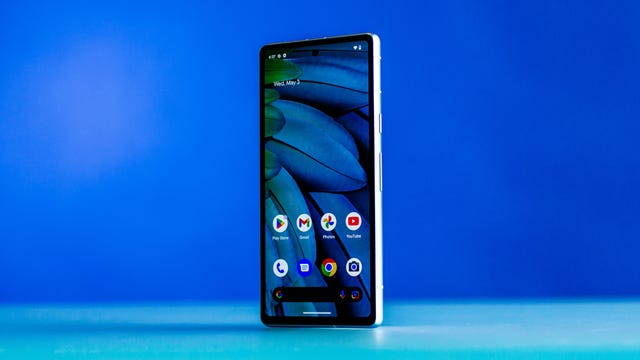
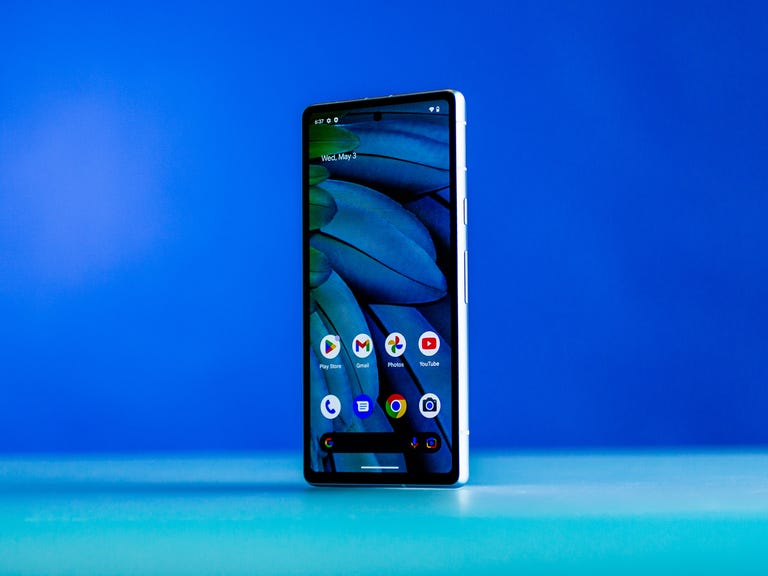
Best foldable phone
Samsung Galaxy Z Flip 5
The Galaxy Z Flip 5 is the biggest leap forward Samsung’s flip phone has seen in years. Samsung has significantly expanded the size of the cover screen located on the outside of the device, meaning you can look up directions, take photos and send messages without opening the phone. It’s this combined with the Z Flip’s solid battery life and sturdy design that makes it a top pick.
The Z Flip 5 may be our favorite flip phone, but there are still some drawbacks to be aware of. At $1,000, it’s still expensive for a phone without a telephoto camera. And not all apps work natively on the front screen as they do on the Motorola Razr Plus.
Pros:
- Big cover screen is fun to use
- New hinge eliminates the gap when closed
- Solid battery life
- More storage in base model
Cons:
- Expensive
- Not all apps work on the cover screen natively
- Apps don’t transition from main screen to cover screen
- Minimal camera updates
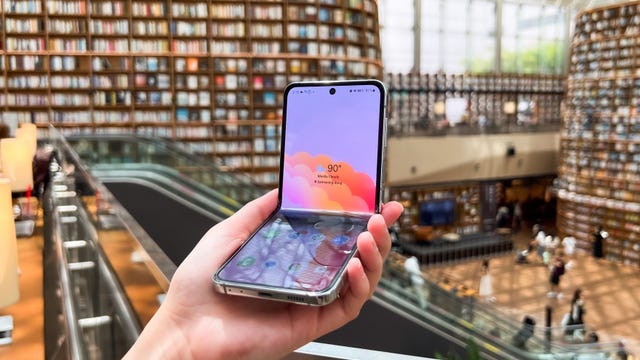
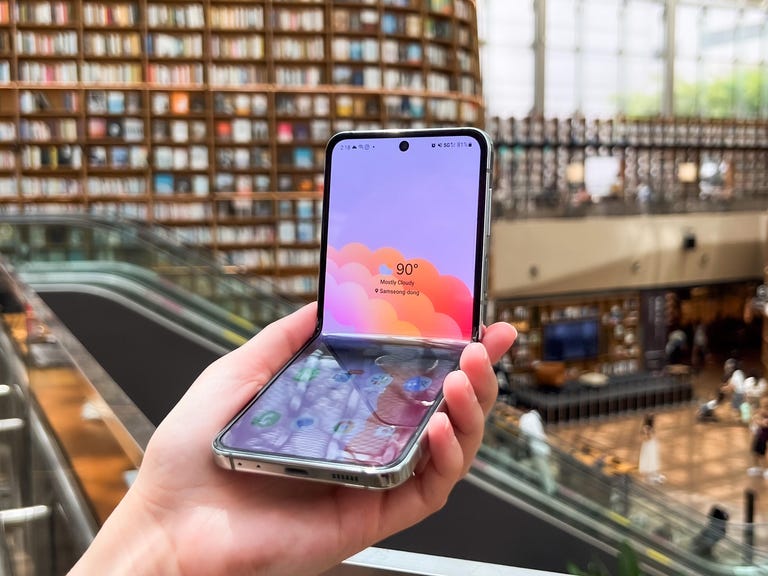
Best phone with a stylus
Motorola Moto G Stylus 5G
If you’re looking for a good budget phone that comes with a basic stylus and support for 5G, then the Moto G Stylus 5 is a great pick. The cell phone features a stylus that you can store inside the phone along with a built-in Notes app to help with productivity. This phone also offers a triple-rear camera, 128GB of internal storage and a robust 4,000-mAh battery.
Pros:
- Large, useful cover screen
- Crease is barely visible
- Thin design
- Good battery life
- Fun photography features like photo previews
Cons:
- Not as many Android updates as Samsung
- Flex View feels limited
- Front screen gathers fingerprint smudges easily
- $1,000 is still expensive
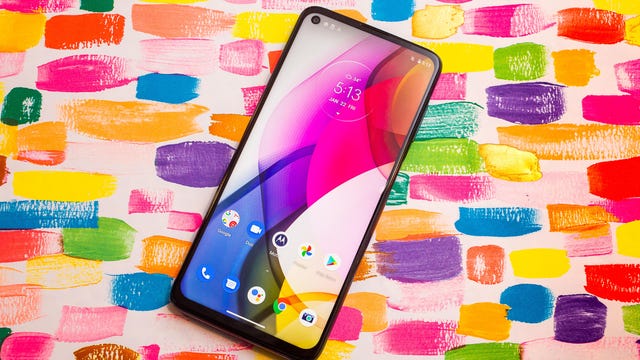
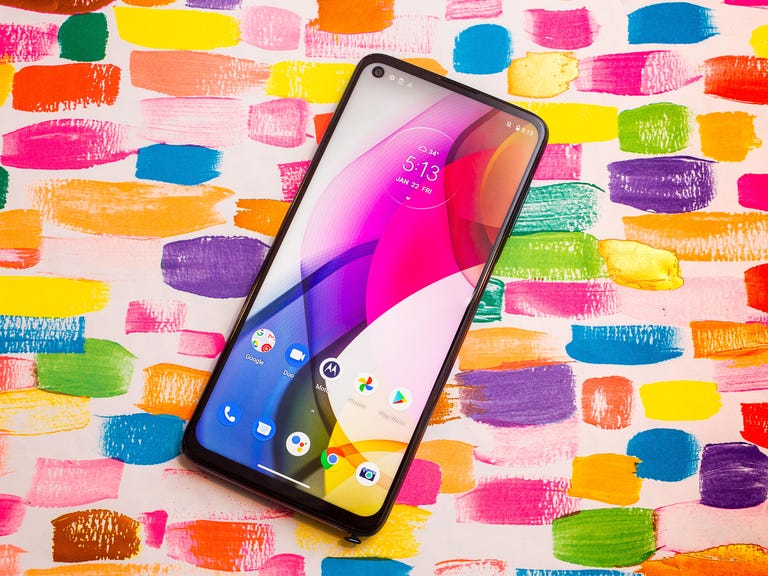
Other phones we tested
The $450 Samsung Galaxy A54 5G proves, you can get a phone with solid performance for a very reasonable price. It packs a 6.4-inch display, an octa-core processor that offers enough power for daily essentials (including light gaming) and a camera that does a decent job of handling your out-and-about snaps. Its 128GB of storage will be enough for most people, and those who need more space can expand it with microSD cards up to 1TB in size.
The $300 OnePlus Nord N30 5G includes a lot of features for the money, but its 50W charging speed is the standout feature. The phone can charge from 0% to 100% in 45 minutes. Its large 6.72-inch 1,080p display runs at a 120Hz refresh rate making apps, games, websites and streaming video animate smoothly. However it’s worth calling out that the 108-megapixel main camera — despite having an astounding megapixel count — takes photos that are only marginally better than other $300 phones.
How to buy a T-Mobile phone
Go to a T-Mobile store: The best way to know if you’ll like a phone or not is to try it in-person.
Pick one: Android or iOS: If you’ve been on an Android phone and are thinking about getting an iPhone, ask your friends and family what they have. If the people you communicate with most are tied into Apple’s ecosystem, it benefits you to stay on team iPhone. If your family are all on Android phones, it might be worth staying with a Pixel phone or Samsung Galaxy phone. Otherwise, it’s simple enough to switch platforms.
Look at last year’s phones: Phones released last year still have many of the same features as a brand new one often at a discounted price.
Don’t discount cheaper handsets: Features of last year’s flagships always trickle down to this year’s midrange handsets.You can get a great phone that does almost everything that a premium phone can do for $500-700.
Buy a phone case: Protect your new phone from wear and tear and even serious damage.
How we test phones
We test every phone in real-world scenarios, focusing on its features, design, performance, cameras, battery life and overall value. We document our findings in an initial review that is periodically updated when there are new software updates, or to compare it against new phones from competitors such as Apple, Samsung, Google and OnePlus.
Photography
Photography is a major focus for most phones these days, so we take pictures and videos of various subjects in a variety of settings and lighting scenarios. We try out any new camera modes, such as Action mode that debuted with the iPhone 14 line, or the Unblur photo tool that launched with the Google Pixel 7 series.
Battery life
Battery testing is conducted in a variety of ways. We assess how long a phone lasts during a typical day of use and note how it performs during more focused sessions of video calls, media streaming and gaming. We also conduct a video playback test, as a simple, replicable measure of pure battery life, which isn’t always included in the initial review but sometimes added later in an update.
Performance measuring
We use benchmarking apps to measure each phone’s performance, alongside our own anecdotal experiences using the phone for our review. Of note are how graphics and animations look. Are they smooth? Or do they lag or stutter? We also look at how quickly the phone switches between horizontal and vertical orientations, and how fast the camera app opens and is ready to take a photo.
We perform processor-heavy tasks like editing photos, exporting videos and playing games. We evaluate whether a newer version of a particular phone includes enough features to make it worth upgrading from older models.
Read more: How We Test Phones


